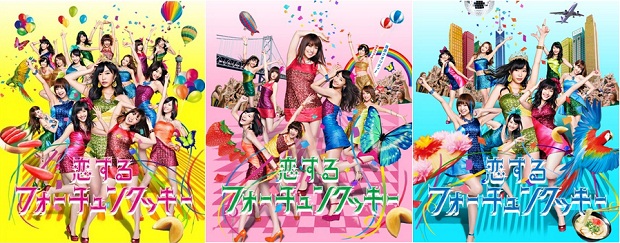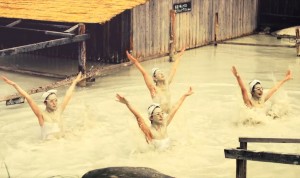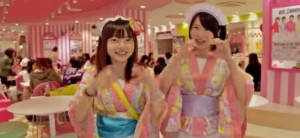With the recent release of their 32nd single, “Koi suru Fortune Cookie,” AKB48 has once again proven their monopoly in Japan’s music industry. After hitting the physical and digital shelves on August 21st, the song topped the Oricon hit charts in its first appearance, selling over a million copies on the first day of release alone.

The number here merely reminds me of the tragic trend in J-pop today where mass production of music adds almost no value to all the “hard work” of musicians and singers but rather degrades it. However, this actually might work better for an idol group like AKB48 whose longtime catch phrase is: “Idols you can meet every day.” From the beginning, AKB has been marketed as a group of ordinary girls who don’t always find themselves at the center of attention. Their success is attributed to the “mass” part, not each individual, which gives fans a sense of belonging as if they were part of the group themselves.
It’s no surprise, then, that their latest single is now one of the most popular songs in the country. What seems to be different this time, though, is that their marketing strategy has evolved from targeting those who love idols for the sake of worshiping what I call “desexualized love interest of all” to a much wider audience of potential fans who just need a final push to be part of that AKB loving community. For this reason I have nothing but great respect for producer Yasushi Akimoto who chose to assign this role of marketing to the fans and staff, not the AKB girls themselves — a kind of marketing that is built on chain reactions.
The song has some different versions of music video, all of which can be viewed on the AKB official YouTube channel. However, the majority of “work” is done by people you have never seen before. The one that has nearly six million views is performed by the AKB staff members.
The message here is rather simple. AKB48 is supported by such a loving crew, so why not love them yourself? Another version features fashion brand Samantha Thavasa and its employees. (Certain girls from AKB48 have appeared in the brand’s advertising in the past.) The most recent collaboration is done by Saga Prefecture.
With more than a thousand members participating (including governor Yasushi Furukawa and some yuru-kyara mascots) and at a cost of ¥500,000 ($4,100), the video serves as a promotional attempt not so much to introduce the prefecture but rather to bring our attention to the people who work there – again, the AKB brand is used to appeal positively to nonchalant viewers who might not necessarily be so interested in this otherwise unknown yet noteworthy corner of Japan.
In fact, Saga already has its own promotional video called “Three Minutes to Saga.” The first half shows everything Saga has to offer in three minutes, as the title says, and the second half looks more like a plain guidebook. If the primary function of promotional videos is to engage viewers and keep their attention from start to finish, then the AKB song and dance has definitely helped them to improve service this purpose.
In October, a version of the music video made by Kanagawa Prefecture was released and this became a hit, racking up 4 million views.
So what will AKB’s next strategy be? One thing we know for sure is that Akimoto would never turn to a fortune cookie when deciding the future prospects of his empire, as he always seems to know exactly how best to promote and sell his products.

























1 Comment
Well written! I didn’t think anyone would notice and write about AKB management’s latest marketing effort on YouTube. My favorite version is also the Saga one which you wrote about. Thank you.